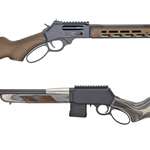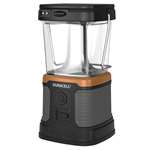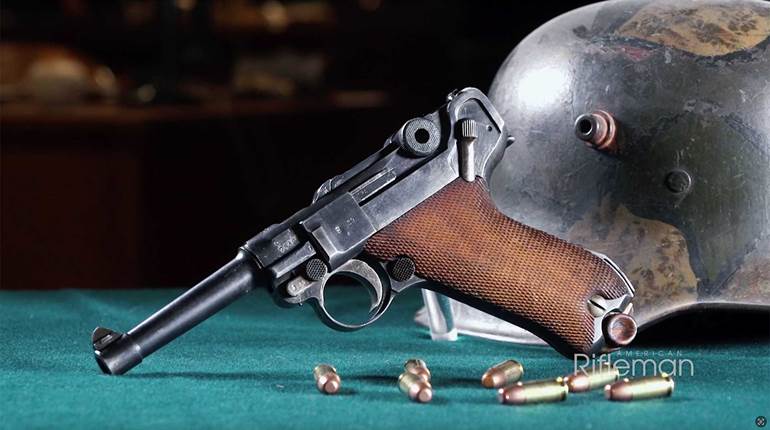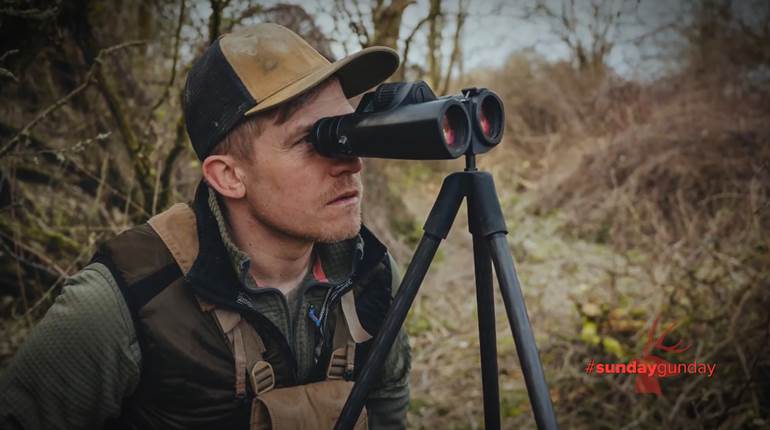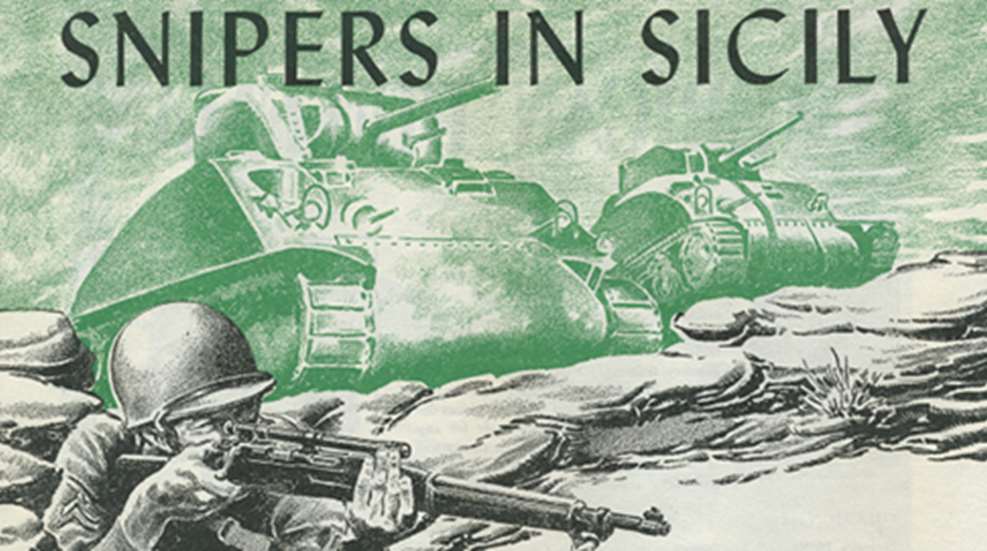
By Bill Shadel, Rifleman War Correspondent
Algiers-The dash across the heart of Sicily, over terrain that would have been ideal for delaying action had the enemy had been given time to prepare it, surprised even the most optimistic among the Second Armored Division almost as much as it did the enemy himself. The success of that drive hinged on rapid movement, constant reconnaissance, and the action of small patrols in which expert riflemen played an important part.
I was able to get the story of some of these riflemen from the man who prepared them for just such action; from the Commanding Officer of the Infantry Regiment of the Second Armored Division, that Camp Perry veteran, member of several International Rifle Teams and top-flight pistol man, Colonel Sydney Hinds. It was Colonel Hinds' conception of the possibilities of individual rifle marksmanship in the work of fast-moving armored division infantry that led to the incorporation of several snipers in each company; snipers equipped with 330 Weaver scopes on an improvised mount on the '03 Springfield.
Many instances are cited in which the marksmanship of those men, snipers and ordinary rifleman, trained by an Internationalist, a competitive target shooter, paid dividends in precious hours saved in the advance of the armored monsters toward Palermo; hours that meant days in the final result.
The Forty-first Infantry Regiment of the Second Armored, less the First Battalion, as a part of Combat Command "A," landed with the Third Infantry Reinforced at Licata, on the southern coast of Sicily. After accomplishing the difficult landing and having reached the assembly area north of Licata, a group from the Third Battalion of the Forty-first, with one tank company and part of a field artillery battery of self-propelled 105's, was ordered to move toward Canicatti to cut the main road between Licata and Campobello di Licata. After a night of advancing patrols and light skirmishes, the group found itself with part of its mission accomplished, ready for the attack on the Canicatti which was to clear the way of the general advance.
It was during this preparation that Lieutenant Colonel Charles G. Rau, 1940 Camp Perry Infantry Pistol Team captain and known to pistol shooters throughout the States, won his Silver Star. The use of his .45 was only incidental, but, to me, it brought out the point of the constant companionship between that weapon and its bearer. Leaving his tanks dispersed below the crest of a knoll, "Chuck" Rau moved forward on foot some fifty yards to cover behind a stone wall. The citation reads: "While in full view of the enemy, Lieutenant Colonel Rau climbed over the wall and proceeded twenty-five yards further to a point of observation." From there, he could see dimly the outline of a German Mark VI tank, evidently waiting to open up on our tanks once they topped the crest of the knoll. "Chuck" pulled his .45 and sighted over it, lining the tank up with more visible landmarks. He then returned to his group, showed his leading tank man the directions by more sighting over the .45. From the crest of the knoll again, he signaled the tanks up and over, personally directing the fire that resulted in one very thoroughly smashed Mark VI and in the continued advance of his own outfit.
Rau's .45 figured in another "incident" which won for "Chuck" the Soldier's Medal. In one of the occupied towns, early in the North African campaign, a man went completely berserk and proceeded to shoot up the place, spraying rifle bullets at anything and everything that moved. Rau buckled on his .45, spotted the man in the street, and ordered him to lay down his rifle. A bullet slapped past him in answer and "Chuck" leveled off a la Camp Perry, and squeezed. The only weak point in the story is that "Chuck" forgot what seventy-five or more yards do to a .45 bullet, with the result that, although he aimed at the man's belly, he scored a hit on the ankle! It did the business, however. It spun the crazed "badman" around and knocked him down, leaving him ready for disarming.
But to get back to the attack on Canicatti and the story of yet another Silver Star Citation for an NRA member: Colonel Hinds and a group of other officers, watching the preparation for the attack, saw what seemed to be a white flag in the town, and Colonel hinds was ordered to move in. Anxious (as he always is, his driver tells me ) to be in the thick of the action, Colonel Hinds and four others moved forward in a half-track. He was out ahead of everyone and nearing the town when the enemy-regardless of the white flag, if, indeed, there had ever been one--opened fire. Small arms rattled first, with artillery tuning in a few seconds later. The half-track was "no fitted place fer man ner beast" and its occupants left it. "Sid" Hinds and two others dived into a ditch that yawned conveniently beside them. Lieutenant W. W. Bundy, the signal officer, was working on the radio when it happened and he dived under the truck. Incidnetally, he finished repairing that radio; and, incidentally again, he came out of the affair smelling better than his companions-for the ditch into which Hinds and the others had jumped had once served as a latrine!
It was an exposed and unfragrant "command post" but Colonel Hinds managed to keep his head "on top" and, by means of the repaired radio, directed his companies in their advance.
That is Colonel Hinds' own version. His citation adds a bit to the story. It reads: "While leading his troops against the enemy, he repeatedly exposed himself to fire of all types to expedite the attack. During the afternoon, night, and morning of the twelfth and thirteenth of July, 1943, Colonel Hinds moved between the front lines of his companies, of ten traveling in a one-quarter-ton unarmored vehicle, and by his outstanding leadership led them on to the successful conduct of the attack."
After the fall of Canicatti, and after the arrival of the Fifteenth Infantry of the Third Division, a line of outposts was set up near Campobello di Licata. San Cataldo followed and, within a few days, the whole area between Licata and Caltanisetta was cut up and cleaned out by the troops operating therein.
Moving west to Agrigento, on the eighteenth of July the Second Armored was once more assembled. On the twentieth, it was ready for the big flanking movement north of Palermo, keeping pace with the advance of the Third Infantry along a more direct route from the south. By the afternoon of the twenty-first, it was before Castelvetrano, the air base, which fell immediately.
Only by study of the map can you appreciate the speed and distances involved in this flanking maneuver. On the twenty-second, with the Forty-first Infantry Regiment forming the advance guard, the long trek toward Palermo began.
The action at San Giuseppe pass, outside Palermo, is an example of how individual rifle marksmanship in the action of small patrols enabled the column to advance so swiftly.
To slow up that advance, the Germans had placed in San Giuseppe Pass, on its north side, one 88 mm., a machine gun, and about a platoon of riflemen. Dug in on the far slope of a hill, overlooking a valley beyond the pass, the 88 covered the narrow gap while the machine gun and the riflemen protected it and at the same time covered any advance through the Pass or by way of the high, rocky cliffs on either side.
The fire of that well-placed 88 halted the advancing column. But not for long! Lieutenant J.K. Maupin, of Washington, Missouri, (who received the Silver Star for his handling of this problem) moved his platoon up the steep cliffs on the left of the pass to a point overlooking the valley. Meanwhile, a .30 caliber machine gun and a 60 mm. mortar were moved into position on the right bank of the pass.
Lieutenant Maupin's riflemen (including two snipers with scope-sighted Springfields) 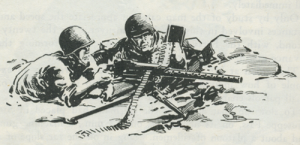 opened fire. The range was some 500 yards, but these men had been trained by "Sid" Hinds! Once in position, they could assume prone, sitting, or kneeling positions, pick their targets deliberately, and shoot. It was a rifleman's field day! The German machine gun crew wilted; hits drove the supporting infantry to deeper cover. One of the snipers told me of resting his rifle on a rock, getting his shots off, and watching his hits through his scope. Telling the story, these men talked the same lingo, used the same phrases, I've heard so often at Perry! They were doping their windage and calling their shots!
opened fire. The range was some 500 yards, but these men had been trained by "Sid" Hinds! Once in position, they could assume prone, sitting, or kneeling positions, pick their targets deliberately, and shoot. It was a rifleman's field day! The German machine gun crew wilted; hits drove the supporting infantry to deeper cover. One of the snipers told me of resting his rifle on a rock, getting his shots off, and watching his hits through his scope. Telling the story, these men talked the same lingo, used the same phrases, I've heard so often at Perry! They were doping their windage and calling their shots!
Their one disappointment was that they couldn't pick off the crew of the 88. The Germans working the big gun were well hidden between the gun's shield and the bank of the emplacement, and the rifle slugs bounced off the armor. But, again, not for long!
Lieutenant Maupin decided on a flanking movement of his own. Leaving a squad of riflemen and his newly arrived machine gun on the cliff, he took the rest of the platoon on a further swing to the left and forward. His new position enabled him to lay aimed fire on the 88 from the side and that, combined with the fire of the mortar which was just now coming into action, drove the Heinies out and back through the orchards to their rear, with well-placed mortar bursts and long-range rifle shots snapping at their heels.
Colonel Hinds, following this action in his command car, was unable to resists those skittering targets. He grabbed his star-gauged Springfield, climbed the right bank of the pass (where one of his lieutenants was cussing the little carbine which he had been firing hopelessly at that distance), assumed the prone, and cut down! Colonel Hinds claims no hits, and whether that is undue modesty I don't know. But I do know that I wouldn't have wanted to be his target, even at those six- to eight-hundred-yard ranges!
This action consumed less than an hour. What would otherwise have been a considerable delay for the entire column was, instead, hardly more than a rest halt. Why? Because the riflemen were there and because they knew how to do the job!
The move on into Palermo, ending a day ahead of even the most optimistic forecasts, is history. Perhaps not so well known, however, is Colonel Hinds' part in the surrender of Italian General Molinero. It was in the early evening dusk, on the outskirts of Palermo. A messenger informed Colonel Hinds that an Italian officer with what appeared to be several staff members was nearby, asking to be allowed to surrender. The Colonel figured that the surrender of any such high-ranking officer should be made to higher authority; and, besides, he was busy! Anyway, he told his S-2 to send the Italian back to General Rose, Combat Command "A."
General Rose was busy, too, apparently. At any rate, he sent the Italian on to General Keyes. General Keyes, for some reason, sent him back to General Rose-and General Rose, not to be outdone, sent him back to Colonel Hinds! Colonel Hinds, still unaware of the Italian's rank, turned him over to his S-2 for safekeeping until morning! And he was safely kept, all right. An American sentry simply replaced the Italian guard outside the Italian General's own headquarters-and the surrender was accomplished the following day!
Colonel Sydney Hinds is still a rifleman. Visiting his quarters, one senses the pride with which he displays his regiment's sniper equipment. He told us how he had managed to have his armorer make improvised scope mounts and rough wooden guards for the protection of the scopes "wangled" from back in the States. He himself chose the post reticule with which the scopes are equipped. And he has had a mimeographed bulletin made up for the instruction and training of special rifleman; a bulletin which is being forwarded and which may appear later in The Rifleman. Colonel Hinds has personally observed the progress of his men on the range and has selected his snipers from the expert groups.
"Snipers," he says, "are provided to supplement men equipped with regulation arms and 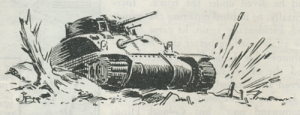 equipment. Usually two in number per infantry company, their principal duty is to kill enemy personnel noted to be in command, from squad leaders on up-and weapons personnel … Defensively, snipers can be used to guard routes of approach. A few well-placed snipers can adequately perform the duties of a much larger force. One instance of this was noted in Eastern Sicily where three German snipers had to be blasted out of a pass with some five hundred rounds of 155 mm. artillery fire and at the cost of much valuable time. Even then, there was no proof that the snipers may not have left the position in time to escape the artillery fire and to set up elsewhere!"
equipment. Usually two in number per infantry company, their principal duty is to kill enemy personnel noted to be in command, from squad leaders on up-and weapons personnel … Defensively, snipers can be used to guard routes of approach. A few well-placed snipers can adequately perform the duties of a much larger force. One instance of this was noted in Eastern Sicily where three German snipers had to be blasted out of a pass with some five hundred rounds of 155 mm. artillery fire and at the cost of much valuable time. Even then, there was no proof that the snipers may not have left the position in time to escape the artillery fire and to set up elsewhere!"
Colonel Hinds carries his belief in the value of snipers even outside the actual combat areas. "When bivouacked or stationed in a hostile area peopled with enemy civilians, the sniper can be most useful in protecting communications and preventing sabotage. A few well-placed sniper posts along an exposed section of wire will protect it. In fact, wherever troops serve, in war, the expert rifleman is invaluable!"
(Another article by Bill Shadel on page two of this issue. Colonel Hinds' bulletin for snipers will be published soon. Meanwhile, Shadel has joined the Fifth Army, in Italy, and will have stories to tell of riflemen in action there. -Ed.)
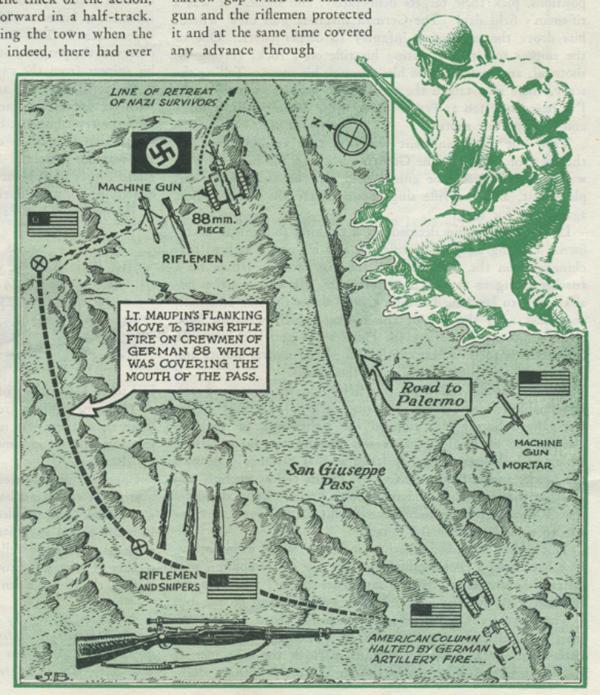












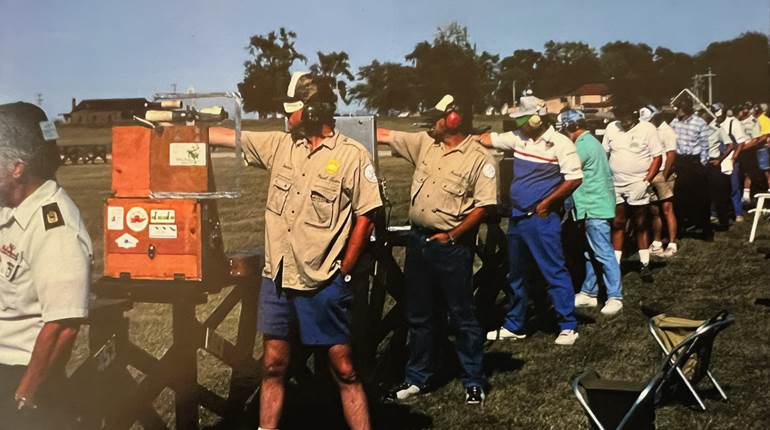
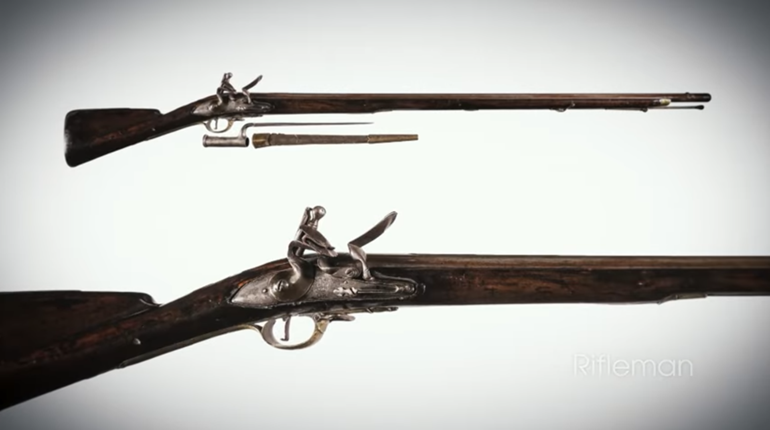
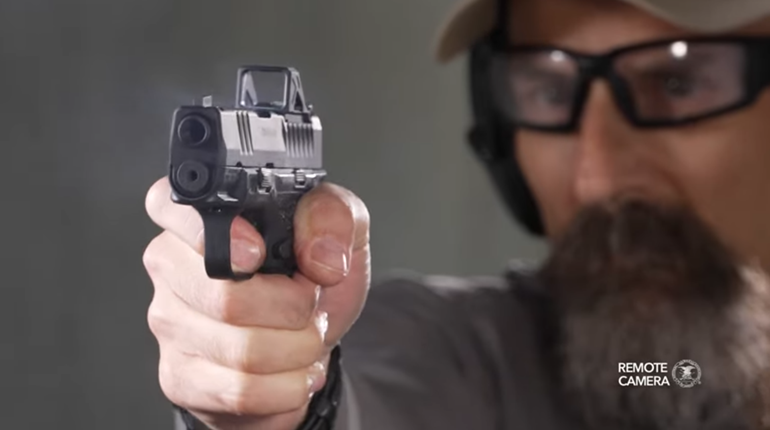
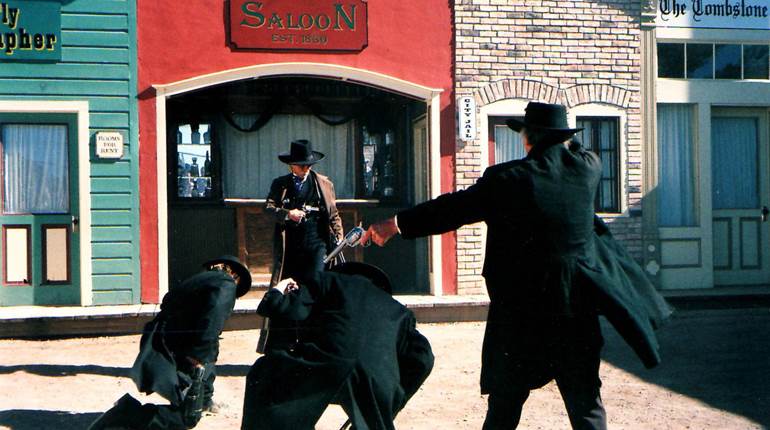



![Auto[47]](/media/121jogez/auto-47.jpg?anchor=center&mode=crop&width=770&height=430&rnd=134090788010670000&quality=60)
![Auto[47]](/media/121jogez/auto-47.jpg?anchor=center&mode=crop&width=150&height=150&rnd=134090788010670000&quality=60)



